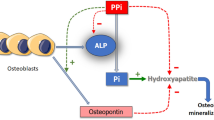Abstract
Background
Pompe disease is a rare, autosomal-recessive disorder which results from a defect in the lysosomal enzyme acid α-glucosidase (GAA). The onset of this disease is highly variable, with infantile types being the most severe. Traditionally, lymphocytes, fibroblasts or muscle biopsies were necessary for enzyme activity measurement, because these materials do not express maltase-glucoamylase (MGA) that interferes with the assay. Recently, acarbose was found to inhibit MGA activity selectively, so that dried blood became accessible for GAA assessment.
Aim
To evaluate the diagnostic efficacy of GAA measurement in dried blood specimens (DBSs) in comparison with lymphocytes. If DBSs provided reliable results, the diagnosis of Pompe disease could be facilitated, and high-throughput screening would become possible.
Methods and results
GAA activity was measured in DBSs of known patients at pH 3.8 (with and without acarbose) and at pH 7.0. Additionally, lymphocytes were obtained from the same patients, and the enzyme activity was determined at pH 4 to pH 7. In total, seven infantile patients and 29 patients with late-onset variants were investigated. All patients were reliably identified by both methods. Furthermore, a simplified protocol was established for neonatal screening.
Conclusion
The fluorometric technique for the assessment of GAA activity in DBS provides a reliable diagnosis for all variants of Pompe disease. The assay protocol could be simplified for neonatal screening, without increasing the false positive rate significantly or burdening the laboratory with time-consuming procedures.


Similar content being viewed by others
References
Baethmann M, Straub V, Reuser AJJ (eds) (2008) Pompe disease. UNI-MED, Bremen
Bembi B, Cerini E, Danesino C et al (2008) Management and treatment of glycogenosis type II. Neurology 71(Suppl 2):S12–S36
Chamoles N, Niizawa G, Blanco M, Gaggioli D, Casentini C (2004) Glycogen storage disease type II: enzymatic screening in dried blood spots on filter paper. Clin Chim Acta 347:97–102
Chien YH, Chiang SC, Zhang XK, et al (2008) Early detection of Pompe disease by newborn screening is feasible: results from the Taiwan screening program. Pediatrics 122:39–45
Dajnoki A, Mühl A, Fekete G et al (2008) Newborn screening for Pompe disease by measuring acid α-glucosidase activity using tandem mass spectrometry. Clin Chem 54:1624–1629
Dreyfus J, Poenaru L (1980) White blood cells and the diagnosis of alpha-glucosidase deficiency. Pediatr Res 14:342–344
Jack RM, Gordon C, Scott CR, Kishnani PS, Bali D (2006) The use of acarbose inhibition in the measurement of acid alpha-glucosidase activity in blood lymphocytes for the diagnosis of Pompe disease. Genet Med 8:307–312
Joshi PR, Gläser D, Schmidt S et al (2008) Molecular diagnosis of German patients with late-onset glycogen storage disease type II. J Inherit Metab Dis. doi:10.1007/s10545-008-0820-2
Kishnani PS, Steiner RD, Bali D et al (2006a) Pompe disease diagnosis and management guideline. Genet Med 8:267–288
Kishnani PS, Hwu WL, Mandel H et al (2006b) A retrospective, multinational, multicenter study on the natural history of infantile-onset Pompe disease. J Pediatr 148:671–676
Kumamoto S, Katafuchi T, Nakamura K et al (2009) High frequency of acid alpha-glucosidase pseudodeficiency complicates newborn screening for glycogen storage disease type II in the Japanese population. Mol Genet Metab 97:190–195
Lowry OH, Roseborough NJ, Farr AL et al (1951) Protein measurements with Folin phenol reagent. J Biol Chem 193:265–275
Müller-Felber W, Horvath R, Gempel K et al (2007) Late-onset Pompe disease: clinical and neurophysiological spectrum of 38 patients including long-term follow-up in 18 patients. Neuromuscul Disord 17:698–706
Okumiya T, Keulemans JLM, Kroos MA et al (2006) A new diagnostic assay for glycogen storage disease type II in mixed leukocytes. Mol Genet Metab 88:22–28
Ploeg AT, Reuser AJJ (2008) Lysosomal storage disease 2 Pompe’s disease. Lancet 372:1342–1353
Winchester B, Bali D, Bodamer OA et al (2008) Methods for a prompt and reliable laboratory diagnosis of Pompe disease: report from an international consensus meeting. Mol Genet Metab 93:275–281
Zhang H, Kallwass H, Young SP et al (2006) Comparison of maltose and acarbose as inhibitors of maltase-glucoamylase activity in assaying acid α-glucosidase activity in dried blood spots for the diagnosis of infantile Pompe disease. Genet Med 8:302–306
Acknowledgements
The study was supported by the Genzyme Corp., USA. We also wish to express our gratitude to Dr. Joan Keutzer for her continuous help and support and to Dr. Gläser (Neu-Ulm) for assisting in the molecular genetic characterization of some patients.
Author information
Authors and Affiliations
Corresponding author
Additional information
Communicated by: Ed Wraith
Zoltan Lukacs and Paulina Nieves Cobos contributed equally to the paper.
Rights and permissions
About this article
Cite this article
Lukacs, Z., Nieves Cobos, P., Mengel, E. et al. Diagnostic efficacy of the fluorometric determination of enzyme activity for Pompe disease from dried blood specimens compared with lymphocytes—possibility for newborn screening. J Inherit Metab Dis 33, 43–50 (2010). https://doi.org/10.1007/s10545-009-9003-z
Received:
Revised:
Accepted:
Published:
Issue Date:
DOI: https://doi.org/10.1007/s10545-009-9003-z




